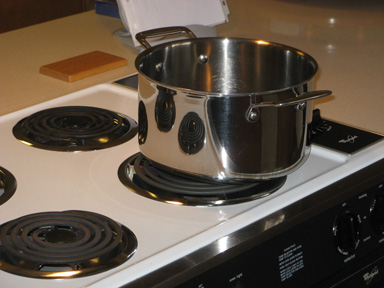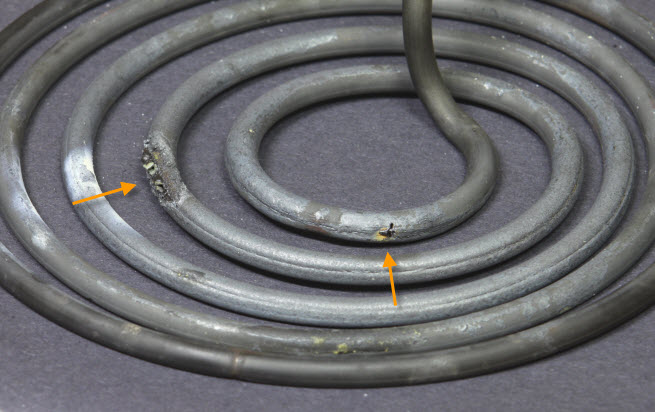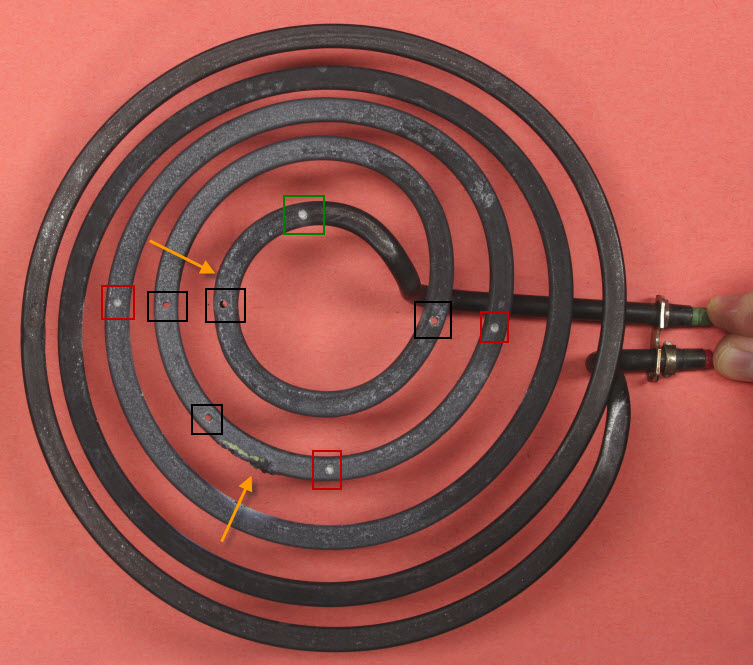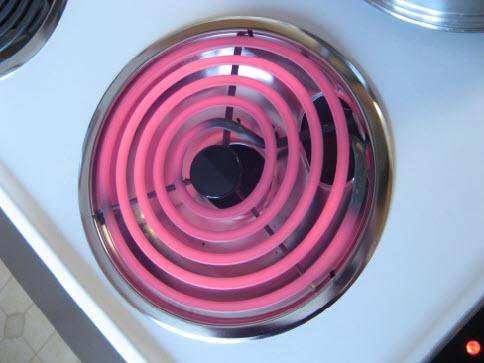Our electric hobs (UK) are like the more expensive end of Betty's depicted range, on the whole. The spiral type are thought of as old-fashioned though, the solid metal topped ones are slightly less unpopular. Spirals live in student flats and bed-sits.
Very few would choose a straightforward electric metal type though. If someone prefers or has to have an electric hob, either induction or halogen lamp styles are much preferred.
The majority of home cooks prefers gas (mains methane). Some use bottled propane just for the hob because they won’t use electricity.
No self-respecting restaurant chef would not have
some gas rings. For a wok burner
there's no easy alternative. This one's 145000 Btu/hr, = 42kW.

What does the world use for those where there’s no mains gas?
Nobody worries much about ordinary domestic hob burners being dangerous. They've only recently needed to have monitoring to turn the gas off if the flame goes out. (Thermocouple or flame rectification.) We have a few incidents from gas grills, because they fall apart etc and produce CO when the flame's bad.
Interesting that JW also suggested spinel - I can't remember why it's in my brain - something from way back.
I'm still unwilling to think of this as an "arc" situation. If you short the two conductors you get a spark, that's not an arc to me. A rather short one if you must! Parallels with welding are tempting but all that I can think of are flawed.
Yes you can weld at low voltage, yes you can weld at low current, but neither is simple.
For low current you need a high frequency. (As in razor blades).
For low voltage you fundamentally need low source resistance, certainly not a length of resistance wire in the way. You can weld things with about 3-4 car batteries, because the source impedance is really low. You can strike the arc and get a couple of hundred amps, no problem. But like half the forum members might have found when trying to get the prop stand on their motorbike back in one piece, you need GOOD car batteries. The one your dad thought was getting a bit tired but kept for no good reason, is no good to you, because its resistance is too high. You touch the metal, get a fat shower of sparks and some melted metal, a puff of something, the rod sticks to the bike stand and everything gets hot in the wrong places!
Something similar would likely happen in the hob element. As soon as current flows the voltage drop in the resistance wire to the scene of the accident, would kill the spark. For those not used to such considerations, if you have 50 Amps flowing through 5 ohms ( about a quarter of the heating element) you have a 250 volt drop. So the arc would have trouble being maintained, but it would certainly be hot. If some metal melted off, then you might lose continuity and have your voltage back, and hot ionised air/gas which conducts, so the spark happens again, and so on.
I still favour the (water-in-a-?) crack (unseen, underneath) as initiating aetiology. If the heating had occurred within the closed sheath and it had "blown" a hole through the sheath I think there would have been a bang and noticeable swelling of the softened sheath before it "went".
Unless there was a “bang”, Rik? I’ve only changed a couple of dozen of these things and I’ve never looked hard, but I’m pretty sure I’ve seen cracks. Some of the pictures show suspiciously uneven surfaces. As explained previously, we know that elements can survive with the core exposed to water.
Oh – flux stabilises an arc and, primary, keeps oxygen out. They’re quite complex mixtures now, though I’m aware they used to be much simpler, such as plain borax. It could be, fortuitously, that the insulator is something active like borosilicate glass, but I don’t think it needs to be. As above, we don’t need a sustained “arc” for it to get hot, just for something to melt. I have no idea what the “something” would be though again, the melting points of NiChrome and Fe aren’t far off, neither are various non metallic compounds.. The white powder and the crystals certainly don’t look like metal, so that only leaves melted insulator. Some metal/insulator could have oxidised, burned, even evaporated. Being blown around by expanding gases would make it look as though it had evaporated.
I don’t think MgO is a contender – it has a very high temperature melting point, and used because it’s fireproof. If some had melted, wouldn’t there have been a lot of melting of lower melting point materials close by?
This has been a trip down memory lane to a point, I used to know more. It’s always easy to shoot at theories, not so easy to be sure without doing what I used to do – cut it up and get it under a SEM, look for evidence of melting and do an analysis. I wonder what those cost on ebay. Would they mark them as “gift”?
(hadn't seen Rik's post when I hit the "submit" button")

 What does the world use for those where there’s no mains gas?
What does the world use for those where there’s no mains gas?


